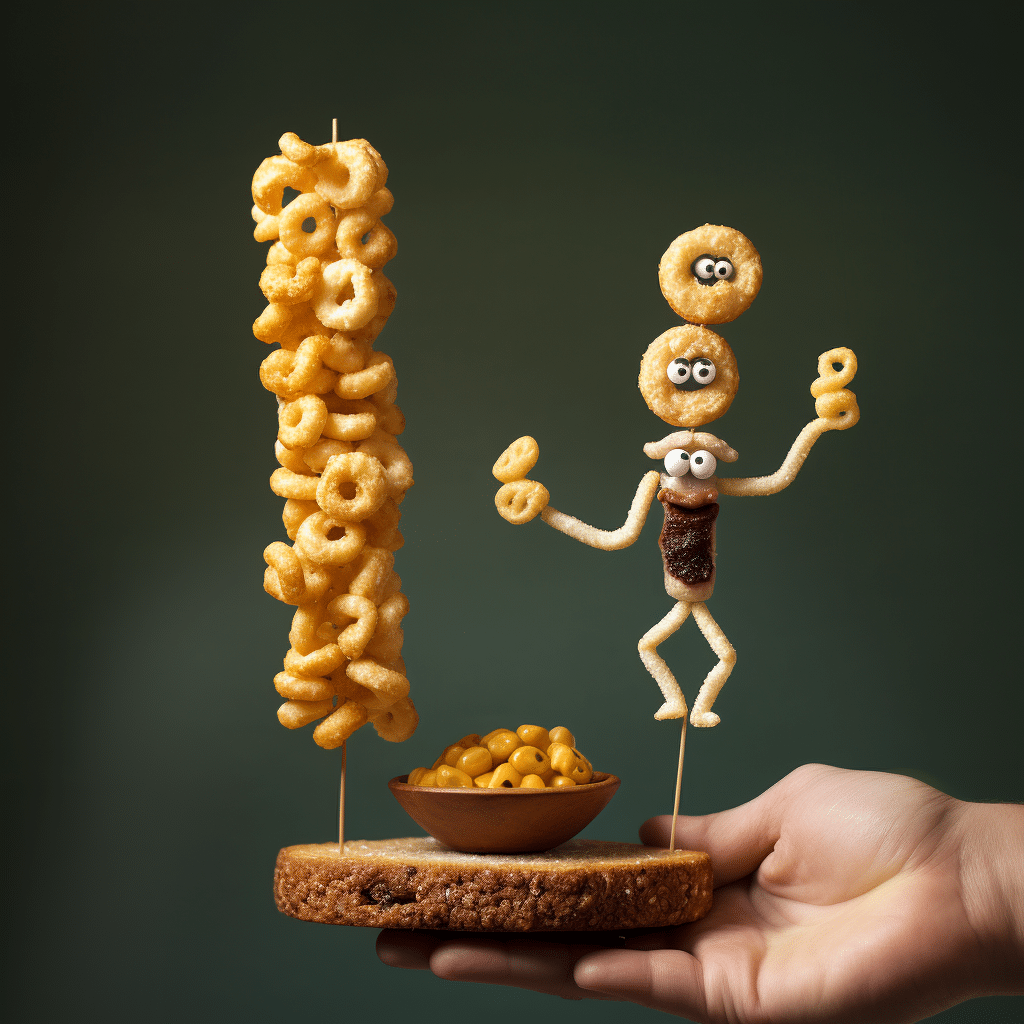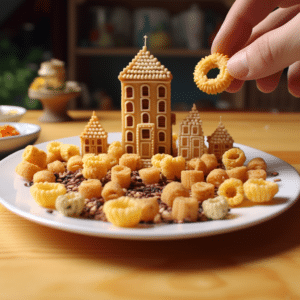
Cheerios vs Puffs: Healthy Finger Foods for Babies
Cheerios vs Puffs Finger Foods: Introducing finger foods to your little one may seem easy, but many parents freak out about it. Giving babies their first finger foods, mainly solid foods, make many moms contemplate the potential occurrence of choking hazards. And although this is a crucial step in your kid’s life, it may become a nightmare. But with proper research and the right knowledge, you can serve your kiddo delicious meals, and they’ll be safe and healthy.
Cheerios and Puffs are two popular finger foods that many moms like to give their babies when introducing solid foods. The two-finger foods are produced by different companies and have unique nutrition profiles. Which one among the two is better? Are Cheerios healthier than Puffs? Read on!

Cheerios vs Puffs Review
Cheerios
Ingredients
The Original Cheerios in the yellow package Cheerios vs Puffs Finger Foods contains whole grain oats, corn starch, sugar, salt, tri-potassium phosphate, and vitamin E (mixed tocopherols) to preserve freshness.
Health Benefits
- Cheerios contain whole grain oats. Whole grains oats are better than refined oats or rice flours commonly used in kids’ foods and snacks. Consuming whole oats provide your baby with fiber that aids in bowel movement, preventing constipation. Whole grains also contain more vitamins than refined ones.
- Another essential nutrient in Cheerios is iron. One serving size of Original Cheerios (¾ cup) provides 6.3 mg of iron. Iron is a crucial mineral in normal body processes whose insufficiency may lead to iron deficiency anemia.
- Original Cheerios is also low in added sugar and salt. Excessive sugar consumption in young kids can lead to childhood obesity, while too much salt can cause kidney issues.
Drawbacks
- Low in protein – with oats as the main ingredients, cheerios are very low in protein. Protein is an essential component of a healthy diet. And including it in each meal and snack is an excellent way of ensuring your kid meet their daily protein needs.
- Contain added sugar – although the Original Cheerios is low in added sugars, other Cheerios are not. The Honey Nut Cheerios contains 12 grams of sugar in one cup (35g). This amount of sugar is twelve times more than that of Original Cheerios.
- Cheerios contain tri-potassium phosphate, a stabilizer, preservative, and texturizer. Phosphates are considered safe when taken in limited amounts. However, problems come in when they build up in the system, causing problems. The European Food Safety Authority recommends regulation of eating foods with phosphate additives reporting that daily phosphate intake from processed foods can make people exceed recommended intakes.
- Processed food – although Cheerios contain healthy ingredients, they are still considered processed food. The oats in Cheerios undergo significant processing to make the final product. This processing makes eating Cheerios not the same as whole grain unprocessed oats. Other Cheerios varieties are also packaged with unhealthy substances during the processing like corn syrup, cane sugar, and preservatives.
Puffs
Ingredients
Depending on the manufacturer, there could be rice Puffs, grain Puffs, etc. But generally, Puffs contain rice, whole wheat, whole grain oat flour, wheat starch, cane sugar, flavor, mixed tocopherol (maintains freshness), fruit puree, sunflower lecithin, minerals, and vitamins E (alpha-tocopherol), B (niacinamide), B6 (pyridoxine hydrochloride), and B1 (thiamine hydrochloride).
Health Benefits
- Puffs contain different flours, making them a good source of carbohydrates. Carbohydrates are energy-giving foods, making your kid active and full of energy.
- Vitamins and minerals – Puffs are generally fortified with essential vitamins and minerals. Depending on the micronutrients used in fortification, your little one can benefit from them. Common micronutrients used in fortification include vitamin E, B complex, D, iron, zinc, and choline.
- Other essential nutrients – different Puffs have different grains, fruits, and vegetables used in production. Each food ingredient is distinct with a unique nutrition profile, positively contributing to your child’s health.
Drawbacks
- Production procedure – all Puffs are produced through a process called extrusion. The technique incorporates mixing grains with water in an extruder at high temperatures and pressures, after which they pass through a tiny hole, giving them the preferred shapes. The extrusion process inactivates enzymes, lowers mineral and vitamin content, breaks down fatty acid bonds, and increases food’s glycemic index. The end product (Puffs) has different nutrients compared to the original ingredients.
- White grains – although there are Puffs made from whole grains, most of the Puffs in the market are mainly made of non-whole grains or white rice. White grains have a high glycemic index, leading to obesity and weight gain. Puffs with the first three main ingredients being non-whole grains are considered refined.
- Lecithin: Puffs have lecithin in them, which comes from soy or sunflower seeds. Hexane is a pollutant in the air and a neurotoxin made from petroleum. It has a skin-deep score of 9 and is mostly used to get veggie oil out of seeds. So, avoid foods with lecithin unless they are made with organic lecithin.
- Sugar – too much sugar has many health consequences, including tooth decay and obesity. Most snacks, including Puffs, contain too much sugar, some of which is disguised as “fruit juice concentrate or “evaporated cane syrup”.

Conclusion
Which cereal is better: The Cheerios brand or Puffs? Both of the two-finger foods have been changed from how they used to be. So, they are best as treats once in a while instead of every day. It’s not a good idea to give your baby junk food as snacks or even as a way to get them used to solid meals.
There is numerous healthy ways to start giving your baby finger foods. Fruits and veggies might work for them, depending on how old they are. There are rules about when you should and shouldn’t give your child certain fruits and veggies. So, if you want to know more, do your homework. Plus, fruits and vegetables are natural foods that give your child the most pure form of the nutrition they need.
Finger Foods: Cheerios vs. Puffs But if we have to choose between Cheerios and Puffs as a treat and not as a healthy meal, I’d rather have Cheerios. Why? Whole grain oat, which is what Original Cheerios are made of, is better for you than refined grains. Compared to Puffs, it has less sugar and salt as well. Two, most Puffs are made of rice or refined grains. They have too much sugar and chemicals like lecithin that aren’t very good. Extrusion, which is used to make puffs, also destroys any nutrients in the raw ingredients.